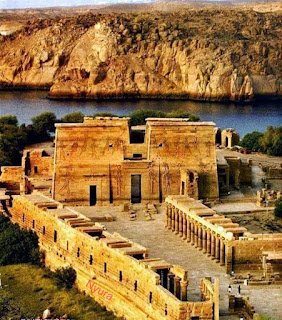 |
| The Early Dynastic period in ancient Egypt |
On small objects from this time, one of them dating to the important king Narmer but certainly mentioning a different person, there are two possible mentions of a “Man” who may be king Menes. If these do name Menes, he was probably the same person as Aha, Narmer’s probable successor, who was then the founder of the 1st dynasty. Changes in the naming patterns of kings reinforce the assumption that a new dynasty began with his reign. Aha’s tomb at Abydos is altogether more grandiose than previously built tombs, while the first of a series of massive tombs at Ṣaqqārah, next to Memphis, supports the tradition that the city was founded then as a new capital. This shift from Abydos is the culmination of intensified settlement in the crucial area between the Nile The river valley and the delta, but Memphis did not yet overcome the traditional pull of its predecessor: the large tombs at Ṣaqqārah appear to belong to high officials, while the kings were buried at Abydos in tombs whose walled complexes have long since disappeared. Their mortuary cults may have been conducted in designated areas nearer the cultivation.
In the late Predynastic period and the first half of the 1st
dynasty, Egypt extended
its influence into southern Palestine and probably Sinai and conducted a
campaign as far as the Second Cataract. The First Cataract area, with its
center on Elephantine,
an island in the Nile opposite the present-day town of Aswān was permanently
incorporated into Egypt, but Lower Nubia was not.
Between late predynastic times and the 4th dynasty—and probably early in the period—the Nubian A-Group came to an end. There is some evidence that political centralization was in progress around Qustul, but this did not lead to any further development and may indeed have prompted a preemptive strike by Egypt. For Nubia, the malign proximity of the largest state of the time stifled advancement. During the 1st dynasty, writing spread gradually, but because it was used chiefly for administration, the records, which were kept within the floodplain, have not survived. The artificial writing medium of papyrus was invented in the middle of the 1st dynasty. There was a surge in prosperity, and thousands of tombs of all levels of wealth have been found throughout the country. The richest contained magnificent goods in metal, ivory, and other materials, the most widespread luxury products being extraordinarily fine stone vases. The high point of the 1st-dynasty development was the long reign of Den (flourished c. 2850 BCE).
During the 1st dynasty, three titles were added to the royal Horus name:
“Two Ladies,” an epithet presenting the king as making manifest an
aspect of the protective goddesses of the south (Upper Egypt) and the north
(Lower Egypt); “Golden Horus,” the precise meaning of which is unknown; and
“Dual King,” a ranked pairing of the two basic words for a king, later associated
with Upper and Lower
Egypt. These titles were followed by the king’s own birth name, which in
later centuries was written in a cartouche.



Post a Comment